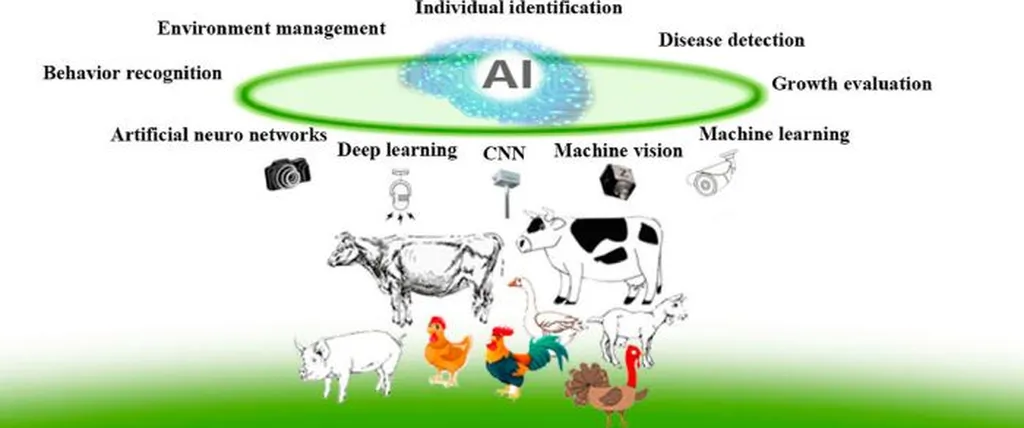In the heart of Ontario, Canada, researchers are revolutionizing the way farmers assess livestock body conformation, a critical factor in evaluating an animal’s production performance, health status, and breeding value. Simon X. Yang, a leading expert from the Advanced Robotics and Intelligent Systems Laboratory at the University of Guelph, is at the forefront of this agricultural transformation. His recent review, published in *Agriculture Communications* (which translates to *Agricultural Communication*), delves into the burgeoning field of computer vision and its applications in precision livestock farming.
Traditionally, assessing livestock conformation has been a labor-intensive process, relying heavily on manual measurements and visual scoring. These methods, while tried and true, are not only time-consuming but also prone to subjective bias. Enter computer vision and artificial intelligence (AI), technologies that are rapidly changing the game. “The integration of computer vision and AI into livestock farming is not just about automating tasks; it’s about enhancing accuracy and efficiency,” Yang explains. His review highlights the potential of these technologies to streamline the assessment process, making it more objective and data-driven.
The research encompasses a range of core technologies, from expert knowledge-based approaches to advanced deep learning models. These methods are applied to various aspects of livestock assessment, including body size measurement, limb and hoof detection, reproductive organ detection, and udder detection. The outcomes are promising, with significant improvements in the accuracy and speed of conformation assessments.
One of the key challenges highlighted in the review is the need for high-quality data. “Data quality is paramount,” Yang emphasizes. “Without it, even the most advanced algorithms will fall short.” Other challenges include the generalization capability of algorithms, real-time performance limitations, and the cost and complexity of deploying these technologies in the field.
Despite these hurdles, the potential commercial impacts are substantial. Precision livestock farming, enabled by computer vision and AI, can lead to more efficient breeding programs, improved animal health, and increased productivity. This, in turn, can have a ripple effect across the agricultural sector, boosting profitability and sustainability.
Looking ahead, Yang envisions a future where these technologies are seamlessly integrated into everyday farming practices. “The goal is to make these tools accessible and user-friendly, so that farmers can reap the benefits without needing a PhD in computer science,” he says. This vision aligns with the broader trend towards smart farming, where data and technology play a central role in optimizing agricultural practices.
As the agricultural sector continues to evolve, the work of researchers like Simon X. Yang will be instrumental in shaping its future. His review not only highlights the current state of computer vision in livestock farming but also paves the way for future developments. By addressing the challenges head-on and pushing the boundaries of what’s possible, Yang and his colleagues are helping to usher in a new era of precision and efficiency in livestock farming.

